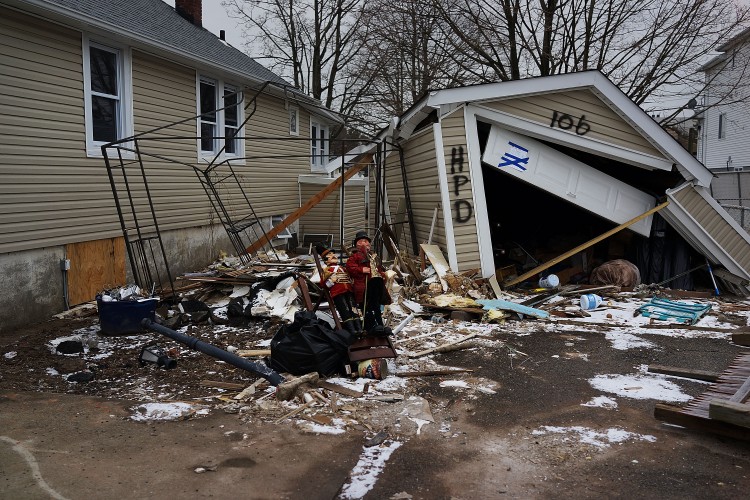Superstorm Sandy was the second-costliest hurricane to hit the United States since 1900—causing some $50 billion in damages across the East Coast—and was labeled the deadliest storm to hit the Northeast in 40 years, stated a report Tuesday.
The U.S. National Hurricane Center (NHC), in its first official assessment of the hurricane, “Tropical Cyclone Report: Hurricane Sandy,” stated, “Preliminary U.S. damage estimates are near $50 billion, making Sandy the second-costliest cyclone to hit the United States since 1900.”
Sandy came in second behind Hurricane Katrina in 2005 in terms of damage expense. The 2005 storm “cost the Gulf Coast states as much as an estimated $125 billion,” according to the National Oceanic and Atmospheric Administration.
The New York City Office of Management and Budget estimated that around $19 billion in damages was dealt to the city during Sandy, the report noted. The city’s eight subway tunnels endured extensive damages after they were flooded by the storm surge, which is estimated to cost around $5 billion to repair.
The report added, “There were at least 147 direct deaths recorded across the Atlantic basin due to Sandy.” Of that figure, 72 deaths occurred in the United States.
Sandy caused more deaths than any hurricane to hit the northeastern United States since Hurricane Agnes killed 122 people in the United States in 1972, according to the report.
The storm also generated a rise in water levels along the entire East Coast—from Florida to Maine—along with wind gusts, the NHC reported.
“The highest storm surges and greatest inundation on land occurred in the states of New Jersey, New York, and Connecticut, especially in and around the New York City metropolitan area,” the report reads. “In many of these locations, especially along the coast of central and northern New Jersey, Staten Island, and southward-facing shores of Long Island, the surge was accompanied by powerful damaging waves.” Some parts of Long Island experienced a rise in waters by nearly 13 feet above normal levels, the report found.
Across the United States, Sandy destroyed or damaged around 650,000 homes and left 8.5 million customers without power, with some left without electricity for weeks or even months, according to the NHC. The majority of the damage dealt to homes was via storm surge or waves.
After each hurricane and tropical storm from the past season, the NHC issues a report detailing the origins and the damage.
“Sandy underwent a complex evolution and grew considerably in size while over the Bahamas, and continued to grow despite weakening into a tropical storm north of those islands,” the report stated. The storm system then strengthened again into a hurricane as it moved northeast before its core hit the New Jersey coastline on Oct. 29.
After it hit New Jersey, the storm was no longer described as “tropical,” but became “post-tropical,” according to the NHC. Following Sandy, the National Weather Service is examining possible changes to the warning system, the report added.
The Epoch Times publishes in 35 countries and in 21 languages. Subscribe to our e-newsletter.






